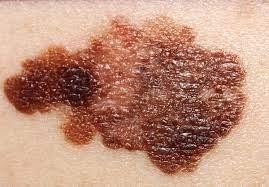A nurse is teaching a client who experiences anaphylaxis from bee stings about an epinephrine auto-injector. Which of the following client statements indicates an understanding of the teaching?
"I should shake the device if the medication appears brown."
"I should not massage the injection area."
"I will inject the medication in the top of my thigh."
"I will refrigerate the injection device when I am at home."
The Correct Answer is C
Choice A rationale:
Shaking the auto-injector is not recommended as it could disrupt the medication's effectiveness. Epinephrine auto-injectors contain two separate components that need to be mixed upon injection.
Choice B rationale:
Massaging the injection site after using the auto-injector can actually help disperse the medication and promote absorption and reduce pain and swelling.
Choice C rationale:
Injecting the medication into the top of the thigh is the correct administration site and technique for an epinephrine auto-injector. It's a large muscle area that allows for rapid absorption.
Choice D rationale:
Epinephrine auto-injectors should not be refrigerated, as extreme temperatures can affect their functionality. The client should store the device at room temperature away from light and heat sources.
Nursing Test Bank
Naxlex Comprehensive Predictor Exams
Related Questions
Correct Answer is D
Explanation
Choice A rationale:
Radiation therapy is not typically the primary method of treatment for melanoma. Surgical excision and other therapies are often utilized.
Choice B rationale:
Metastasis in melanoma generally occurs from the outer layers of the skin to deeper levels and eventually to other parts of the body.
Choice C rationale:
Specific genetic mutations, such as mutations in the BRAF gene, are associated with an increased risk of developing melanoma.
Choice D rationale: Melanoma is a highly metastatic form of skin cancer that can spread quickly to other parts of the body. Early diagnosis and treatment are crucial to improve outcomes.

Correct Answer is C
Explanation
Choice A rationale:
Urine in acute glomerulonephritis often appears tea-colored or smoky due to hematuria.
Choice B rationale:
Hypertension is common in acute glomerulonephritis.
Choice C rationale:
Fluid retention and subsequent weight gain are common due to decreased kidney function.
Choice D rationale:
Hyponatremia is not typically associated with acute glomerulonephritis.
Whether you are a student looking to ace your exams or a practicing nurse seeking to enhance your expertise , our nursing education contents will empower you with the confidence and competence to make a difference in the lives of patients and become a respected leader in the healthcare field.
Visit Naxlex, invest in your future and unlock endless possibilities with our unparalleled nursing education contents today
Report Wrong Answer on the Current Question
Do you disagree with the answer? If yes, what is your expected answer? Explain.
Kindly be descriptive with the issue you are facing.
